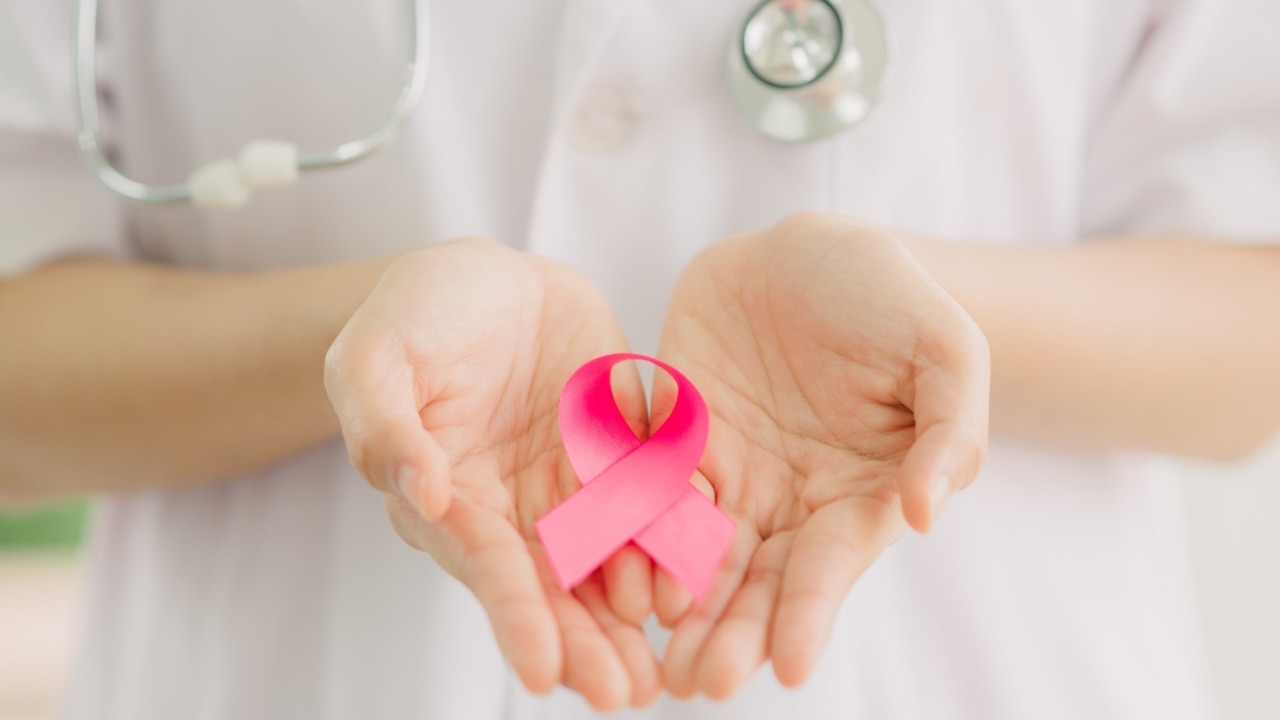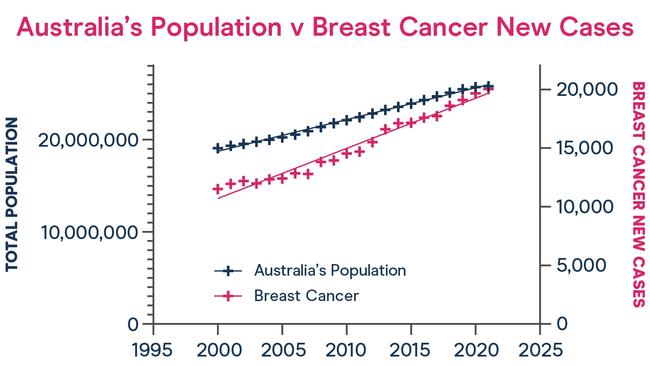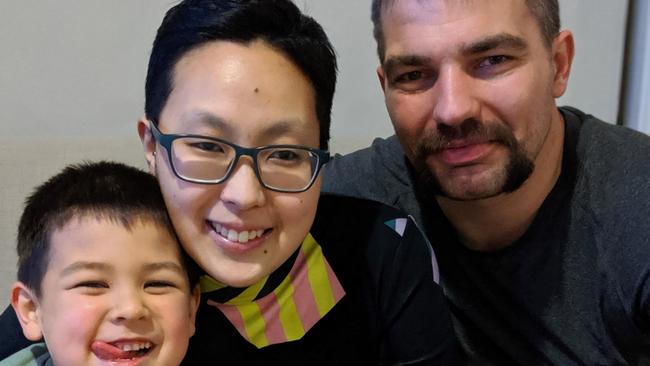Shocking new breast cancer statistic
Professor Nehmat Houssami has been given a daunting task- find a way to prevent this alarming breast cancer statistic from increasing.

National
Don't miss out on the headlines from National. Followed categories will be added to My News.
EXCLUSIVE
THE number of women dying from breast cancer has leapt dramatically, from eight per day to nine, new data shows.
The National Breast Cancer Foundation’s analysis of Institute of Health and Welfare figures found diagnoses were rising so fast new cases were now outstripping population growth.
In the past decade, the number of breast cancer cases has climbed from 14,693 to 20,030.
Experts put this down to increased awareness and screening, lifestyle factors and the ageing population.
To stem the alarming jump the National Breast Cancer Foundation (NBCF) is providing ten years’ funding to University of Sydney’s Professor Nehmat Houssami to devise a Breast Cancer Prevention plan.
It’s part of the charity’s bid to achieve zero deaths from the cancer by 2030.
“There is a huge increase in the number of people getting breast cancer, an increase of 36 per cent in the last 10 years alone,” NBCF CEO Professor Sarah Hosking said.
While advances in screening and treatment have seen the five year survival rate from the cancer grow from 76 per cent in 1994 to 91.5 per cent, deaths are still increasing.
“The number of deaths is creeping up and the reason it’s creeping up is because the number of people actually getting breast cancer is going up,” Professor Hosking said.
Professor Houssami’s job is to try to improve screening for breast cancer by testing whether 3D mammography can pick up more cancers, find ways of improving surveillance of women with cancer and quantify the risk of a woman’s cancer spreading to other parts of the body.
She will also investigate whether controlling weight gain after menopause might prevent breast cancer.

“In a pilot trial we found that the 3D mammogram compared to the standard mammogram finds an additional three cases for each 1000 screened women compared to the standard mammogram,” Professor Houssami said.
She is now planning a larger scale trial on 40,000-50,000 women through BreastScreen Victoria to determine if the strategy will work on a large scale.
A 3D mammogram is different to a standard mammogram because it revolves around the breast and separates out layers and folds of breast tissue. This allows the radiologist to see through the strands, giving them a greater chance of finding breast cancer.
Only five to 10 per cent of breast cancers are linked to cancer causing genes, like BRCA1 and BRCA2.
Many women don’t realise that changing their lifestyle can have more of an impact on their risk of cancer than their genes.
“There are links between lifestyle choices and cancer for about one in four breast cancers, basically they would not happen if people made healthy lifestyle choices,” Professor Hosking said.
Some examples are:
*women who drink one standard glass of alcohol every day have about seven per cent higher risk of breast cancer than women who never drink alcohol.
*women who are overweight or obese after menopause have an eight per cent higher risk of breast cancer.
*smoking is also linked to breast cancer
*a lack or regular exercise is also linked to a higher breast cancer risk

Victorian mum Georgina Huan was diagnosed with locally advanced breast cancer in 2018 — the same year she lost her aunty to the same disease.
The news also came within months of her own wedding and just before her 30th birthday.
A cancer researcher herself, the now 32 year old said it took her six months to get a proper diagnosis because her doctor said she was too young to have cancer.
“I had a lump it was growing bigger it was rock hard, and my nipples were starting to bleed,” she said.
Eventually she had a mammogram and a biopsy which found she had a grade 3 cancer that had spread to her lymph nodes.
“Doctors shouldn’t brush off younger women, because the younger you get diagnosed the more aggressive the cancer,” she said.
“We definitely need to create more need to create more awareness and definitely more research,” she said.
If you want to donate go to www.nbcf.org.au
More Coverage
Originally published as Shocking new breast cancer statistic




